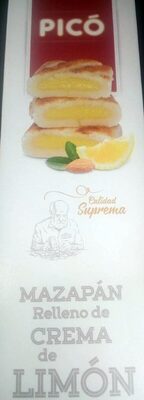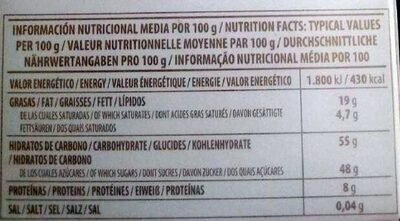Mazapán relleno de crema de limón - Picó - 150g
This product page is not complete. You can help to complete it by editing it and adding more data from the photos we have, or by taking more photos using the app for Android or iPhone/iPad. Thank you!
×
Barra-kodea: 8412115013707 (EAN / EAN-13)
Izen arrunta: Mazapán relleno de crema de limón
Kopurua: 150g
Markak: Picó
Kategoriak: en:Snacks, en:Sweet snacks, en:Confectioneries, Mazapan
Etiketak, ziurtagiriak, sariak:
en:FSC, en:FSC Mix, en:Green Dot

Link to the product page on the official site of the producer: https://turronpico.com/productos/especia...
Dendak: Consum
Saltzen diren herrialdeak: Espainia
Matching with your preferences
Ingurumena
Ontziratzea
Transportation
Report a problem
Datuen iturria
Product added on by kiliweb
Last edit of product page on by alia.
Produktuaren orria -gatik editatua yuka.sY2b0xO6T85zoF3NwEKvlkN2fYr5mzzlFD3ii0Oa__GtdbfLePZsyZnHAas, yuka.sY2b0xO6T85zoF3NwEKvlmhGfcaEvA7BZyHtvBev6dmrfpXBfdh-ya-kH6s.









